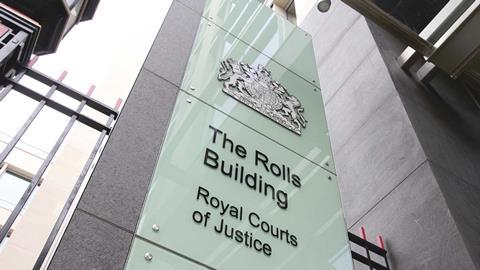Overlong, overworked and actively damaging to witness recollection. That, in a nutshell, was the verdict of the Witness Evidence Working Group on the last 30 years of witness statement preparation in the Business and Property Courts − a verdict which has directly led to the introduction of new Civil Procedure Rules for witness evidence from 6 April 2021.
In truth, behind this recent development stand years of judicial disquiet. As long ago as 1996, Lord Woolf’s report on the civil justice system raised concerns that ‘witness statements have ceased to be the authentic account of the lay witness; instead they have become an elaborate, costly branch of legal drafting’. For the better part of a decade, courts have repeatedly acknowledged scientific advances exposing the vulnerability of human memory to alteration when presented with new information about past events.
Other tribunals are also taking note. Just last year, the International Chamber of Commerce commission published a report addressing the science of human memory, recognising the malleable nature of recollection and setting out proposals to tackle concerns that preparing witness statements may itself be damaging to witness recollection. But it is the English courts that have acted first (and dramatically) to introduce mandatory rules controlling the way witness evidence is prepared.

These rules, set out in the new Practice Direction 57AC, will transform the way trial witness evidence is prepared for a significant proportion of civil disputes in England and Wales. The changes are numerous, but a common thread is to ensure that witness statements capture witnesses’ actual recollection of relevant events, untainted by later influences. How this is achieved will pose challenges to both witnesses and lawyers in how they approach the process of preparing witness evidence.
A key change is the new rules regulating witnesses’ use of documents. In the past, it was common for witnesses to review and comment on a wide range of documents while preparing their evidence. The new rules recognise that this can interfere with rather than refresh memory of events, even unconsciously and unintentionally. As a result, the new ‘statement of best practice’ introduced by PD57AC − which despite its name, is mandatory − requires that witness statements now be prepared ‘in such a way as to avoid so far as possible any practice that might alter or influence the recollection of the witness other than by refreshment of memory’, requiring
‘[p]articular caution’ before a witness is shown any document that they did not create or see at the time. Giving these new provisions teeth, witness statements must now be accompanied by a list of all the documents which the witness reviewed in the course of preparing their statement.
These reforms contain traps for the unwary. To take a common example, when confronted with the threat of litigation and the prospect of having to give evidence verified by a statement of truth, many witnesses will naturally want to take steps to check the accuracy of their recollection before committing to a statement. In many organisations, witnesses will have access to a host of records that could allow them to do just that. But while understandable, this kind of uncontrolled reconstruction of events is precisely what the new rules are designed to avoid, and in-house lawyers will have to act promptly when disputes arise to ensure that prospective witnesses do not take steps to investigate matters that could undermine the quality of their evidence.
Even experienced litigation lawyers risk being caught out by the new rules, perhaps above all when preparing drafts of witness statements. Any lawyer who has prepared trial witness evidence in the past will appreciate that it is often only in the drafting process itself that gaps and points for clarification emerge from a witness’s explanations. That is why placeholders are such a common feature of the drafting process. But the form of these placeholders has become quite tightly prescribed – the new rules are clear that this cannot be done by ‘proposing content for approval, amendment or rejection by the witness’, nor by embedding into the text closed questions with proposed answers – that would fall foul of the separate prohibition of leading questions.
The goal of the new rules has been described by those who designed them as ‘to foster a necessary change of culture’. Clearly, this change of culture can only occur with a shift in approach, by lawyers and their witnesses. Equally clearly, it appears that the Business and Property Courts will take steps to enforce compliance, including refusing permission for parties to rely on non-compliant statements at the pre-trial review hearing, typically scheduled a few months before trial. There has been evidence of growing judicial activism in this area even before the new rules came into force, and notably the working group anticipated that intervention at this stage would ‘carry strong coercive effect’. The new sanctions provided by the new rules will also give the court additional tools of enforcement.

We can expect the first wave of judgments tackling witness statements produced under the new rules before the end of the year. Litigants who egregiously fail to comply with the requirements of PD57AC risk becoming poster children for the court’s new ‘change of culture’. The message for litigants and lawyers is clear − the long era of judicial grumbling about witness evidence is over and parties must now change with the times or face sanctions.
Louise Freeman is partner and chair of the European dispute resolution group, and Eddy Eccles an associate at Covington
































No comments yet